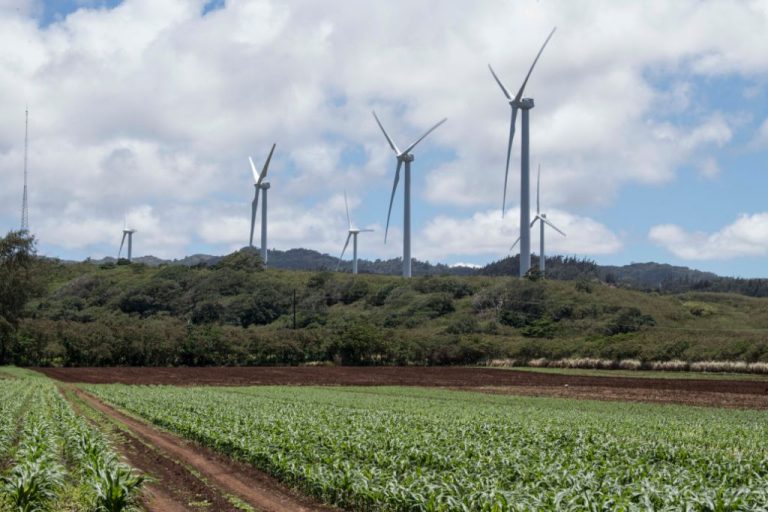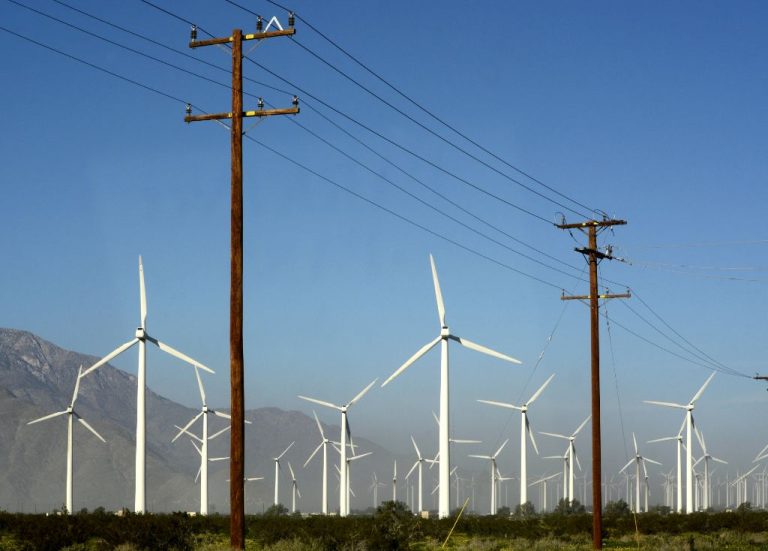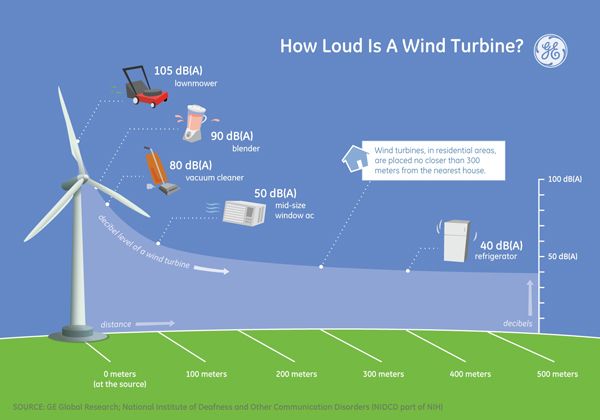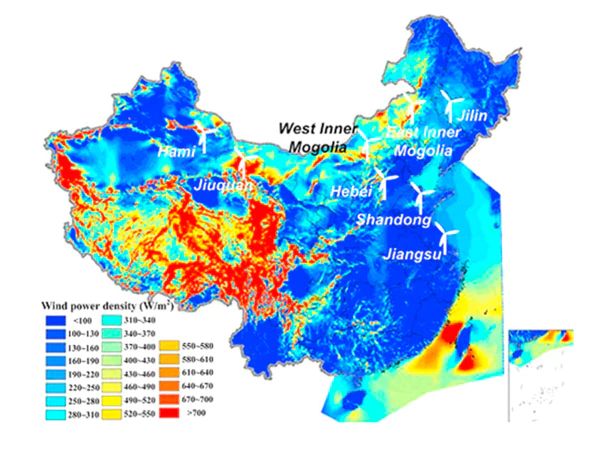What Type Of Energy Is Wind A Source Of?
Wind energy refers to the process of using wind turbines to generate electricity. Wind is a form of solar energy caused by uneven heating of the atmosphere by the sun, the irregularities of the earth’s surface, and rotation of the earth. Wind flow patterns are modified by the earth’s terrain, bodies of water, and vegetative cover. This wind flow, or motion energy, when “harvested” by modern wind turbines, can be turned into electricity.
Wind turbines convert the kinetic energy in wind into mechanical power that runs a generator to produce clean, renewable electricity. Today’s wind turbines are highly efficient at harnessing the power of the wind. Wind power is a sustainable, affordable, and environmentally responsible solution for generating electricity in the United States and around the world. Wind turbines can be built on land or offshore in large bodies of water like oceans and lakes. Land-based wind power and offshore wind power both provide promising opportunities to provide a substantial amount of our electricity generation.
Wind Energy Basics
Wind is a renewable energy source that uses the natural power of wind to generate electricity. When wind flows over the blades of a wind turbine, the blades spin and turn an electrical generator. This converts the kinetic energy from the wind into mechanical power and then into electricity.
Unlike fossil fuels like coal, oil and natural gas that require mining or drilling, wind is naturally replenished. The amount of wind available at any location depends on the land’s terrain and weather patterns. Areas with consistent strong winds, like coastlines, plains and hilltops, are best suited for wind energy projects.
Wind power is considered a green energy source. It does not produce air or water pollution because no fuels are burned. Wind turbines generate electricity without producing greenhouse gas emissions that cause climate change.
How Wind Turbines Work
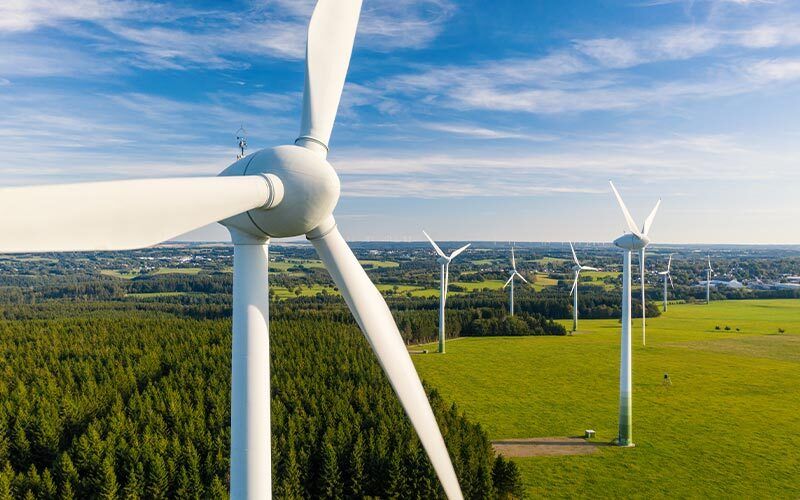
Wind turbines utilize the kinetic energy in wind to generate mechanical power and electricity. When the wind blows, it flows over the blades of the turbine, creating lift and causing the blades to rotate. The rotating blades turn a shaft inside the nacelle (the part of the turbine that sits atop the tower). The shaft is connected to a generator which converts the rotational mechanical power into electrical power.
Modern wind turbines are designed to optimize the amount of energy capture from the wind. The turbine blades are shaped like airplane wings – the wind causes lift as it flows over the curved surface. The blades are connected to the hub and rotor, which turn at 10-20 revolutions per minute. A gearbox is used to increase the rotational speed to the level required by the generator.
The nacelle sits atop a tall tower, placing the turbine high up where wind speeds are greater. The height of the tower is optimized based on the site and wind patterns. The nacelle can turn to face into the wind, aligning the blades perpendicular to the wind direction. This maximizes energy capture as the turbine operates most efficiently when directly facing the wind.
Environmental Benefits
Wind is a clean energy source that does not produce air or water pollution like fossil fuels. Wind turbines do not release emissions that can contribute to climate change or impact public health. Wind power generation produces no greenhouse gas emissions during operation. According to the U.S. Environmental Protection Agency, the use of wind potentially avoided over 198 million metric tons of carbon dioxide emissions in 2019 alone. This is equivalent to taking over 43 million cars off the road for a year.
Wind energy also consumes no water for continuing operation, unlike many other power sources. Wind turbines do not require water for steam or cooling, helping conserve this limited resource. The generation from wind farms protects the environment by avoiding harmful emissions and preserving clean air and water.
Capacity and Production
Wind energy capacity in the United States has expanded rapidly over the past decade. According to the American Wind Energy Association (AWEA), the U.S. has over 122 gigawatts (GW) of installed wind capacity as of 2021. This is enough to power over 42 million American homes. Texas leads the country with over 39 GW of wind capacity, followed by Iowa, Oklahoma, Kansas, and California.
The AWEA reports that wind energy provided over 9% of total U.S. electricity generation in 2021. Annual wind power generation reached nearly 338 million megawatt-hours in 2021, which is more than triple the amount generated in 2010. Wind generation accounts for a significant share of electricity produced in many states, including Iowa (57%), Kansas (47%), Oklahoma (38%), North Dakota (32%), and South Dakota (30%).
The outlook for continued growth in wind energy is positive, with over 50 GW of new wind capacity under construction or in advanced development at the end of 2021. Offshore wind is also starting to take off in the U.S., led by projects on the East Coast. Expanding wind power generation will be key for states hoping to meet renewable energy targets and reduce carbon emissions from the electricity sector.
Cost Comparisons
When considering various energy sources, cost is an important factor. Compared to traditional fossil fuels, wind energy is becoming increasingly cost-competitive.
The levelized cost of wind power has dropped dramatically in the past decade, declining by 69% between 2009 and 2020 according to Lazard. This makes wind one of the most affordable energy sources available today. In many cases, wind is cheaper than even natural gas and coal.
According to the U.S. Energy Information Administration, the estimated levelized cost of new electricity generation in 2023 is:
- Wind (onshore): $36 per MWh
- Natural Gas: $44 per MWh
- Coal: $60 per MWh
Utility-scale solar is comparable to onshore wind, while offshore wind remains more expensive. However, as technology improvements drive down costs, offshore wind is expected to become price competitive as well.
Given the declining price trajectory, wind energy is an economically attractive option for new electricity generation capacity, increasingly undercutting fossil fuel alternatives.
Challenges
While wind energy offers many benefits, it also comes with some unique challenges that need to be addressed. One of the main challenges with wind power is its intermittent and variable nature.
The wind does not blow consistently, which means wind turbines do not generate electricity at a steady rate. Wind speeds can fluctuate greatly, both hour-to-hour and day-to-day. They also vary seasonally, with wind patterns shifting throughout the year.
This intermittency can make wind power unpredictable and inconsistent. Grid operators have to account for these fluctuations when integrating large amounts of wind energy into the power system. Sudden drops in wind generation can cause reliability issues if backup power is not adequately available.
There are ways to mitigate wind’s variability. Improvements in weather forecasting allow grid operators to better anticipate wind output. Interconnecting wind farms that are geographically dispersed helps smooth out production. And continuing to develop energy storage solutions can provide backup power when the wind is not blowing.
But intermittency remains an inherent challenge with wind power. As more wind capacity comes online, addressing this variable characteristic will be key for integrating wind successfully onto the grid.
Offshore Wind
Offshore wind farms have enormous potential to provide clean and renewable electricity. While land-based wind farms have proven successful, offshore wind turbines can harness stronger and more consistent winds found over the water. Installing wind farms a few miles offshore takes advantage of the vast open areas along coastal regions and the Great Lakes.
According to the U.S. Department of Energy, the technical potential for offshore wind in the United States is more than 2,000 gigawatts, nearly double the nation’s current electricity use. Several East Coast states including Massachusetts, New Jersey, New York, and Virginia have set goals for offshore wind development and procured over 25 gigawatts so far. Europe is also rapidly growing offshore wind, led by the United Kingdom, Germany, and Denmark.
Floating wind turbines that can operate in deeper waters are an emerging technology that could unlock even more offshore wind potential. While offshore wind is still more expensive than onshore wind and other energy sources, costs are decreasing as the technology advances and the supply chain matures.
Future Outlook
The future looks bright for wind energy. Wind power capacity is expected to grow rapidly in the coming decades. According to the U.S. Department of Energy, wind energy could provide over 35% of U.S. electricity by 2050 if wind capacity grows at a rapid but achievable rate. Global wind energy capacity could increase more than four-fold by 2050 under the International Energy Agency’s New Policies Scenario.
Several factors will contribute to the continued growth of wind power. Improved turbine technology and declining costs will make wind even more competitive with conventional sources. Supportive government policies such as production tax credits, renewable portfolio standards, and efforts to reduce greenhouse gas emissions will further incentivize wind farm development. The potential to produce wind energy offshore also offers enormous untapped potential.
While wind will continue to grow, it still faces challenges from fossil fuel interests and politicians opposed to renewable energy. However, the compelling environmental and economic benefits of wind provide a strong impetus for further development. With the right policies and sustained technological advancement, wind power can become a leading source of clean, renewable electricity globally.
Conclusion
To summarize, wind energy is a renewable source of energy that comes from natural wind flows. Wind turbines convert the kinetic energy from wind into mechanical power which generates electricity. Wind power produces no air or water pollution, is affordable and cost competitive with fossil fuels, and helps countries improve their energy security and reduce reliance on imported fuels. While wind power growth faces challenges like grid integration, avian impacts, and local opposition, there are solutions to mitigate these issues. With powerful offshore wind resources yet to be tapped, wind energy is poised to supply a substantial share of the world’s electricity far into the future.

